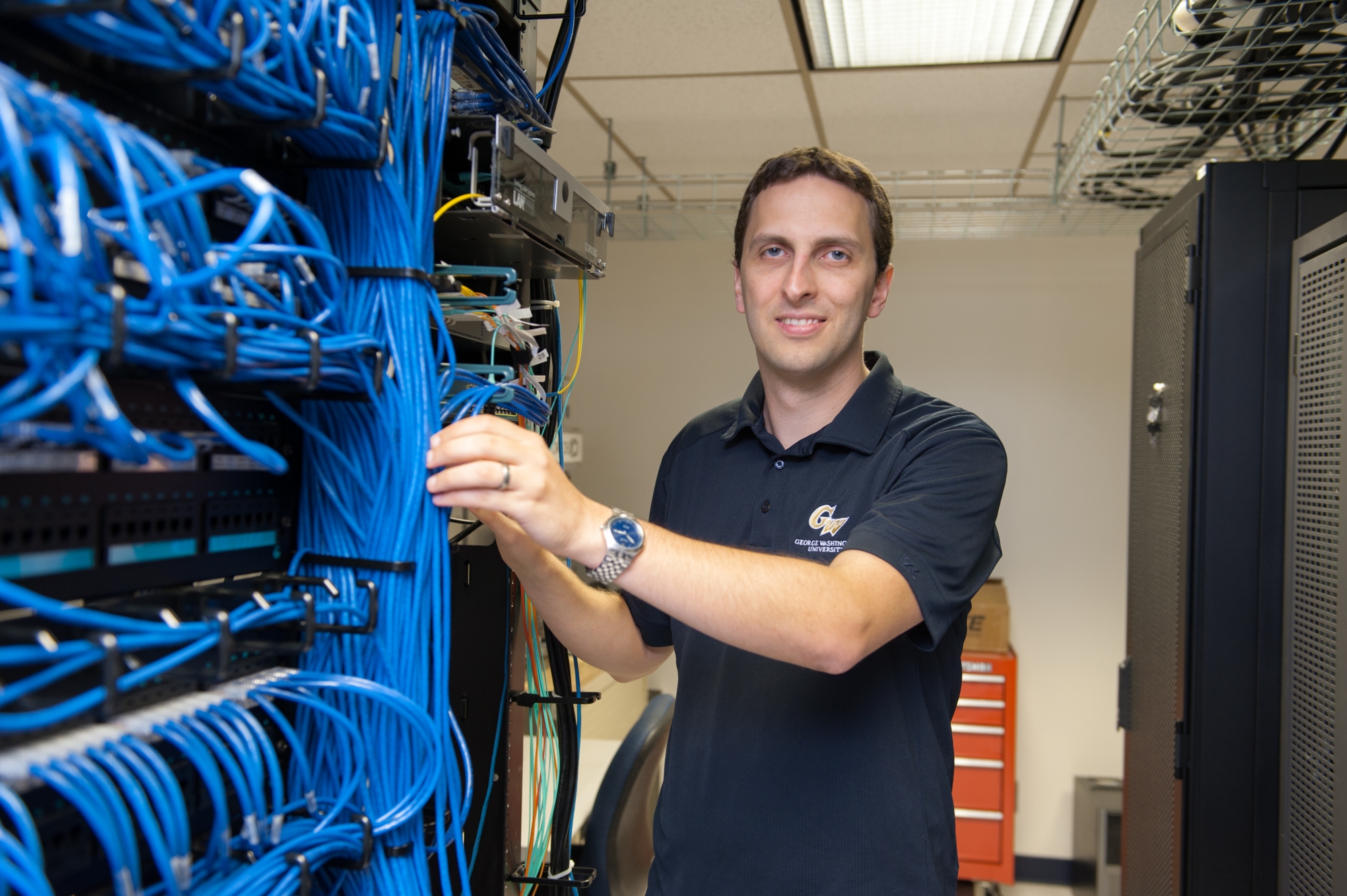
Professor Tim Wood
Professor Tim Wood of the Department of Computer Science comes from a family of artists: his relatives are painters, weavers, and potters. He’s not an artist himself, but he is very creative, and he learned at an early age that computers were his “medium” of choice for expressing his creativity. “Creating things inside a computer is in many ways similar to creating a work of art,” he argues. “It requires a mix of creativity and problem solving.”
What he creates inside computers is the infrastructure necessary to help run the “big data,” or data-intensive, operations that we all hear so much about these days. Big data operations can include everything from companies collecting information on millions of customers and their preferences, to scientists across the world compiling masses of climate data daily to aid in weather predictions, to governments gathering health care information about us.
As these and other sorts of data-intensive operations multiply, the storage space to hold all these data must grow along with them, as must the computation power necessary to analyze the data and “answer the interesting questions,” as Professor Wood puts it. He is quick to say that he’s actually agnostic about the questions; what interests him is finding ways to make the infrastructure that supports big data more reliable, more efficient, and more secure.
“Because we have so much data to process, we really need to develop entirely new techniques,” he explains. “This requires us to approach the problems in a different way.” His approach to improving the infrastructure in cloud computing and big data systems is to focus on the virtualization layer, a piece of software that sits beneath the operating system and above the hardware.
Professor Wood’s work on the virtualization layer allows him and his collaborators to develop improved reliability or better security without having to change the operating systems or the applications that people want to use. “That is our expertise. That gives us an edge,” he claims. “By working at that layer, we’re able to provide support for many different types of applications, because it’s not specific to any of those applications.”
Through his research to manage the performance of big data systems, Professor Wood has developed new techniques to run big data applications using resources that otherwise would have been left idle in a cloud computing platform. “We’re able to make these systems much more energy efficient by making use of computers that otherwise wouldn’t have been fully utilized, and we’re able to do this without hurting the performance of other applications running on the system,” he states.
Although still early in his career, Professor Wood already has had a great deal of success with his research, winning two National Science Foundation grants—including the very prestigious Career Award—and a Google research award. It seems he indeed has found the right outlet for his creativity.

